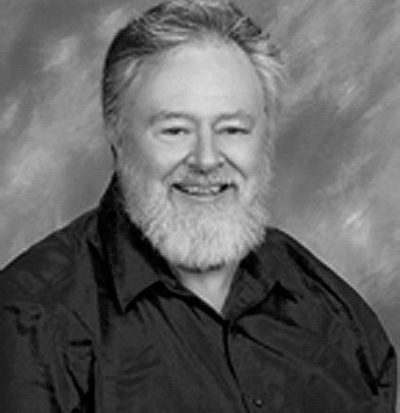

By David E. Roy
At the end of June, the U.S. Supreme Court handed down a landmark 5-4 ruling that determined it was the “right” of the owners of the “closed corporation” Hobby Lobby to choose not to fund certain forms of birth control based on the owners’ personal religious beliefs. (A “closed corporation” is a form typically used by a family, and it means there are no public shares.)
Justice Ruth Bader Ginsburg wrote an extended dissent with several sharply defined objections that cut to the heart of the matter. We would hope that when this issue comes before the Supreme Court again (which it will by the very nature of the current decision), Ginsburg’s dissent will be the model followed for overturning this anti-constitutional decision.
The majority ruling, made by the five male conservative justices, strikes a negative blow against women’s right to control their bodies and the constitutional clauses in the Bill of Rights that have served to protect religion and the state from control by the other.
A case can be made that both issues should be and are major concerns for religious progressives. As there is not sufficient space to argue both issues in a single column, and because this constitutionally anchored principle serves to protect the rights of any group from those in power, this is the primary focus here.
The opening words of the Bill of Rights’ First Amendment: “Congress shall make no law respecting an establishment of religion, or prohibiting the free exercise thereof.” This encompasses what are termed the Establishment Clause and the Free Exercise Clause.
Thomas Jefferson more clearly brings out the intent of these clauses in a letter he wrote to a group of concerned Baptists. Their purpose, he said, was “building a wall of separation between Church and State.”
This idea found its way into the Constitution’s Bill of Rights only after many years of painful struggle that began with the start of the British colonies in the New World during the early 1600s.
SCOTUS “Gang of Five”Puts Blasting Caps Against the Wall
That five justices of the Supreme Court could seek to punch holes in the “wall of separation” in the Constitution is far beyond appalling. For some justices, perhaps this could be chalked up to ignorance of the history and purpose of these clauses. For others, as intellectually intelligent and well-educated as they are, this looks like a crassly motivated decision cynically carried out.
It is difficult to imagine how democracy’s final guardian of the Constitution—our Supreme Court—could have made this decision. The crafting of the Constitution and the Bill of Rights was shaped by a long history of painful and even bloody events. This is certainly the case with the establishment and free exercise clauses.
A major issue had to do with the freedom or lack of it in that era to understand God’s nature and to seek a relationship with God that was forbidden by the Church of England. English citizens who were unhappy with the Church of England (Roman Catholic, once-removed) formed a large percentage of the first major groups to cross the Atlantic in the hopes of practicing their religion (mostly various brands of Christianity) the way they wanted. This included the Pilgrims (1620) and the Puritans (1630). Both were established to create religiously devoted and controlled colonies.
Some of the Earliest Colonies Functioned as Theocracies
While they ultimately did this, nonetheless from the start they exhibited the same rigid and ruthless intolerance as did the Church of England toward any who might deviate from the tenets and practices of their specific form of religion. This was no small matter.
Those who resisted were variously sent back to England, banished or exiled from the colony, and some were even hanged. One was Mary B. Dyer, who had converted to Quakerism and kept returning to Massachusetts, preaching that God spoke directly to people and not through the preachers, and that men and women were equal.
These colonies were run by the religious authorities. The authorities, including the clergy, would decide who could run for office, create and enforce the rules (rules given power by the religious authorities), and try, convict, sentence and sometimes execute the guilty by hanging. (Love only goes so far.) By definition, this makes these colonies theocracies. Today’s public tends to think of an Islamic state as being a theocracy. That’s correct, but they tend not to see this about what takes place here.
Williams Championed a Colony Open to All Religions
Amid all this, Roger Williams, brilliant and theologically educated, stood out as a complex thinker and leader, invariably at odds with one or more of the official leaders who outranked him socially.
Seeking a way to move past the long history of intense conflicts, which, at times, turned into fiercely fought and bloody fights, Williams brought together other groups with minority views in their own colonies.
What emerged was the colony in Rhode Island for which Williams had secured a charter from the King permitting the colony to run its regular (civil) activities without any one church in the lead or actually any religious oversight by any group. The charter also said that diverse religions were welcomed. So no state religion and no religion was in charge of the state. Plurality and diversity existed in a civil society.
Roughly a century later, a somewhat vaguer expression of this idea became the first part of the first of the rights guaranteed to the people of the new nation.
Old Theocracies versus New Theocracies
This latest Supreme Court decision amounts to a de facto effort to return to a theocracy. In this case, it is not a colony in the original sense of the word, but one that is a close enough approximation in today’s world.
This corporation becomes the theocracy as it is now able to legally set aside a provision of a law passed by Congress and signed by the President. Hence, the owners are de facto the religious leaders of the company and their beliefs and consequent rules prevail despite the law of the land.
To Quote Ginsburg…
As Ginsburg pointed out, in a church or a nonprofit religious organization, it is reasonable to assume that those in the religious institution have the same beliefs (though obviously not always true). But a secular corporation cannot use religion or religious beliefs in hiring, therefore the employees cannot be assumed to have the same beliefs of the owners. Her pointed comments on this are delightful:
Indeed, until today, religious exemptions [page break] had never been extended to any entity operating in “the commercial, profit-making world.” [legal citation] The reason why is hardly obscure. Religious organizations exist to foster the interests of people subscribing to the same religious faith. Not so of for-profit corporations.
Workers who sustain the operations of these corporations commonly are not drawn from one religious community. Indeed, by law, no religion-based criterion can restrict the [page break] work force of for-profit corporations. [legal citation]…
The distinction between a community made up of believers in the same religion and one embracing persons of diverse beliefs, clear as it is, constantly escapes the Court’s attention. One can only wonder why the Court shuts this key difference from sight. (pp. 15–17 of Ginsburg’s dissent)
The stage has been set for many more challenges like this. But there could be some that would raise bellows of rage from those who presently are celebrating. Consider what likely would happen if a Muslim-owned family business wanted the same type of exception to a major new national law because of their religious beliefs. Considering how easily volatile this could get, one can only wonder as to the true motivations of the “SCOTUS Gang of Five.”
*****
Ordained in the United Church of Christ, David Roy is a pastoral counselor and a California licensed Marriage and Family Therapist who directs the Center for Creative Transformation. He has a Ph.D. in theology and personality from the Claremont (California) School of Theology. Send comments to him at admin@cctnet.com or 5475 N. Fresno St., Suite 109, Fresno, CA 93711.
